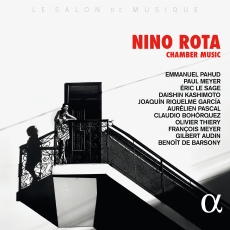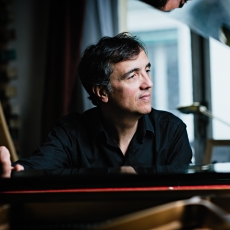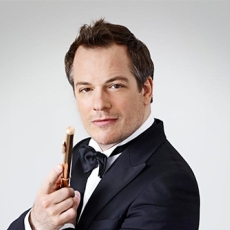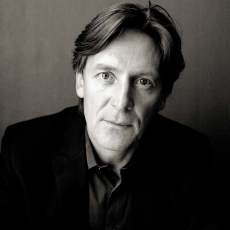Éric Le Sage, Emmanuel Pahud & Paul Meyer - Nino Rota: Chamber Music - MusicWeb International
That Nino Rota was a composer of remarkable facility, few music-lovers will doubt. His film scores reveal an extraordinary ability not only to match a story’s mood, but to create it. Then, too, there is his capacity for pastiche of very high order, as in his waltzes from Il Gattopardo. Since his death, more attention has been paid to his wide range of non-film music, perhaps as much as to his better-known scores. Such facility has its drawbacks – that he composed so easily, and so much, (and so tunefully, which to the grimmer sort of twentieth century critic, implied a lack of seriousness), might not have aided his cause (Arnold, Martinů and Prokofiev have had similar problems). And, as with Martinů and Prokofiev – hardly so with Arnold – there is something elusive about Rota’s personality. Yet, as this remarkable recording – and it is very special – reveals, this is someone touched by true genius.
Outstanding among his works is the remarkable Nonetto, the centerpiece here, fully worthy to stand beside the great Nonets of Spohr and Martinů. Instruments (violin, viola, cello, double bass, flute, oboe, clarinet, bassoon, horn) are identical to the selection by Martinů in his three-movement work. Rota’s five movements (allegro-andante-allegro con spirito-canzone con variazioni, allegretto calmo- vivacissimo) convey a remarkable variety of moods and insights. Contrast the apparently conventional opening allegro with the subtle mood changes of the beautiful succeeding andante, and the allegro becomes not so conventional after all. Here and throughout the music is unflagging in intensity and concentration. While the idiom has nods to neo-classicism and even Victorian salon music, the level is elevated far beyond pastiche. Demands on the players are very great, not simply in terms of virtuosity and ensemble but in sensitivity and mood. Because of the clarity of textures, (all credit to the sound engineers), there is no hiding-place for the routine. The nine players here rise to every challenge with élan, poise and character. A great performance of a great work.
Other works on the disc have their own considerable delights. The Trio for flute, violin and piano, from 1958, is a close contemporary of the Nonetto, with perhaps more evident technical difficulty, especially in the writing for piano and flute. It is no less demanding in the concentration required, splendidly sustained here.
The Trio for clarinet, cello and piano, from 1973, is more evidently relaxed and elegant. But simply to hear that would be to miss both the technical subtlety and very formal structure of the work. There is evident continuity between this and the brief, charming Piccola offerta musicale from 40 years earlier. Nothing is wasted, there is no lingering for its own sake. Each note and phrase is telling.
The remaining three pieces, for solo piano, beautifully played by Éric Le Sage, have their own delights and attention to detail. It would be good to hear from him all Fifteen Preludes. Despite being himself a fine pianist, Rota composed relatively little for the sole instrument (perhaps a little more than Bruckner composed for the organ), and it would be good to hear more.
Is there such a thing as a faultless recording? Probably not – but this is perhaps as close as one might hope to get. The musicians – Emmanuel Pahud is perhaps best known – are all distinguished in their own right, and it shows in phrasing and subtlety, but all subordinated to the needs of the ensemble. Definitely a recording of the year for me.



